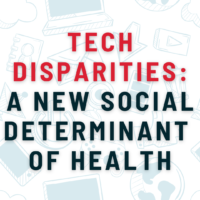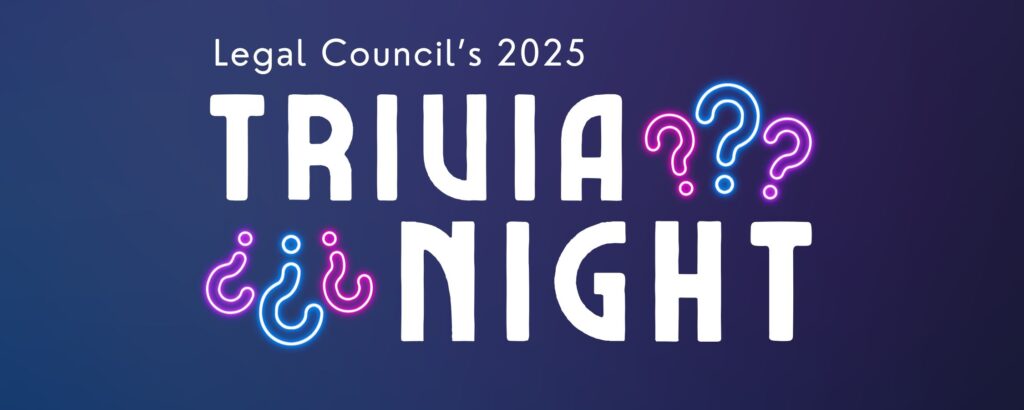Tech Disparities: A New Social Determinant to Health
When the Illinois Department of Human Services (IDHS) began implementing an electronic enrollment and case management system in 2014 they expressed twofold goals. The State wanted to ease the workloads of overly stretched human service employees, while also creating an internet-accessible system that could broaden their reach for benefit users by allowing them to apply and check on the statuses of their cases. This transition has not been without tension.
Many people are more easily able to apply for benefits online through ABE and access information on their cases in the Department’s “Manage My Case” portal. They are spared the time and lost-wage expense of having to go in person to their public benefits office to manage their benefits. That said, the transition has had its share of tech growing pains. For example, since the implementation of the second phase of the integrated eligibility system (IES) in October 2017; eligible individuals and families have sporadically lost access to their SNAP, Medicaid, TANF & other public benefits due to system errors. In the months following the roll-out, the number of disenrollments increased from the typical 14,000-15,000 monthly case cancellations to more than 40,000 cases canceled.[1] Similarly, Illinois went from having about 12,000 applications not processed within federal timelines, to more than 120,000 in 2018 and 2019, leaving very low-income Illinoisans without any health coverage and very limited access to healthcare.
Additionally, access to technology and the increasing reliance on tech in applications for public benefits has always posed a unique set of challenges and burdens on our communities. According to a Kaiser Family Foundation 2019 American Community Survey prior to the pandemic, 13% of Medicaid enrollees did not have any internet access at home, and another 13% had limited access only through a smartphone instead of a computer device.[2] COVID highlighted these tech access disparities and significantly intensified the disruptions caused by access challenges. During COVID, internet accessibility became a lifeline in several areas such as telemedicine, remote employment and education, and interpersonal relationships. Moreover, the temporary closures of IDHS offices meant that applicants could not rely on in-person visits for benefit assistance and needed to rely even more on tech systems that were inaccessible.
Overall, the increased need internet use during the pandemic highlighted the existing tension between tech efficiencies and tech barriers in programs designed to alleviate poverty.
Addressing Impact on Legal Council Clients
Legal Council for Health Justice’s Senior Legal Advocate and Health Insurance Specialist, Marina Kurakin (she/her), sees firsthand and almost every day the problem that automation creates for her clients in terms of accessibility, particularly for those with limited technological capabilities — both older and younger adults and limited-English proficient or immigrant populations.
“There has been a noticeable trend amongst these groups in terms of their lower levels or differing digital skills,” Marina shared. “Many older adults or immigrant/non-English speakers report not having an email address, or if they do have an account do not seem to know how to utilize it on their own. Whereas the younger adults appear to rely primarily on alternative forms of communication like texting or social media to communicate and are also not typically using or frequently checking their email.”

Marina joined Legal Council in 2013, with extensive experience working with immigrants, refugees, and other vulnerable populations. Currently, Marina leads our legal clinics at TPAN and at the CARE program with UIC.
Currently, a person is not required to use or create an email address for benefit applications or to access their benefits case online. However, the system does require identity proofing through an Experian credit check—a process far more rigorous than the identity verification process, for example, for accessing banking or other services online. For individuals living undocumented (without an SSN), or for younger adults (without a credit history), among many others, this means that they cannot use the “Manage My Case” function without first submitting a form to IDHS and waiting an additional 6-8 weeks for access.
Concerningly, IDHS is also now transitioning to the “ILogin” system to access benefits and Manage My Case. This adds another layer of protection for users (multi-factor authorization is a requirement to set up and use the system), but does not come without a consequence. In order to register for this system, a user must create a unique User ID and Password and it is also now a requirement to input an email address and phone number. ILogin has transitioned on the website for SNAP (formerly known as food stamps) recipients to access different functions related to their LINK Card like checking balances, purchases, or reporting changes.
Legal Council clients have already been reporting issues with accessing the ILogin system despite following the instructions. Marina also shared that she can see how this will pose a problem for the many users that have limited internet access or skills to be able to register and use this software. “This transition to ILogin is especially worrisome because the ILogin implementation timeline with another major stressor on Illinois eligibility and enrollment systems – the unwinding of Medicaid continuous coverage provision.”
Congress enacted the Medicaid continuous coverage provision to ensure that no one was terminated from Medicaid during the pandemic unless they chose to be terminated or moved from the state. However, Congress has ended this provision as of March 31, 2023, which means that Illinois must start the process of reviewing eligibility on all Medicaid cases again. Most Medicaid members will need to take action in order to keep their benefits at this review, and online access will be a key way to renew. Rolling out ILogin during this exact time period will make that online access more challenging for Legal Council clients, and keeping Medicaid more time-consuming for them and for our staff who are assisting those who need it.
It is critical for our systems of access to public benefit — particularly for the aforementioned populations that have already been having great difficulty utilizing the current systems in place – carefully consider the tension between tech solutions and concomitant tech barriers to minimize the risk that people will not receive the medical care, food, or financial assistance that is essential to their safety and well-being. As advocates at Legal Council for Health Justice, we will be monitoring this situation and doing whatever we can to inform our clients and assist in appealing wrongful denials or terminations.
[1] Trotter, Greg (2017, December 18). Food stamp benefits disrupted for thousands as state launches new eligibility system. Chicago Tribune. https://www.chicagotribune.com/business/ct-biz-snap-benefits-delayed-20171214-story.html
[2] Corallo, Bradley (2021, September 22). Housing Affordability, Adequacy, and Access to the Internet in Home of Medicaid Enrollees. KFF. https://www.kff.org/medicaid/issue-brief/housing-affordability-adequacy-and-access-to-the-internet-in-homes-of-medicaid-enrollees/


